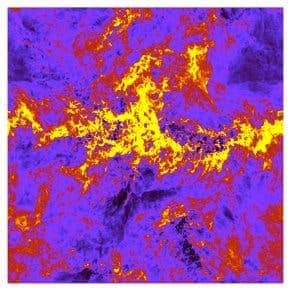This might strike some of you as a surprise, but turbulence, a phenomenon we all encounter on a daily basis – be it while mixing coffee, starting your car (fuel and air mixture) or of course while flying – and which has been first scientifically described some 600 years ago, remains today one of the greatest unsolved problems in science. A recent study by researchers Max Planck Institute for Gravitational Physics (Albert Einstein Institute / AEI) in Potsdam offers new insights that may help solve this problem after findings show that a side of a widely accepted theory for turbulence requires revision.
Turbulence was first studied scientifically by Leonardo da Vinci way back in the 15th century, while the most basic description of turbulence cam in the 18th century when renowned scientists Claude Navier and George Stokes formulated equations that described the motion of fluids and gases – to this day these are known as the “Navier-Stokes equations”. Once the world became more and more industrialized, technological demand required scientists to come up with a better understanding of turbulence which governs a slew of mechanical processes. Fuel mixture quality, which is dependent on turbulent vortices greatly influence efficiency, for instance. The breakthrough came during WWII when Russian mathematician Andrey Kolmogorov wrote a phenomenological theory for turbulence that is still valid today.

These snapshots at various times during the simulation of a stimulated turbulence in hot plasma show the energy density. In the bright regions, energy and temperature are the greatest in each case. © David Radice / Luciano Rezzolla (AEI)
His theory offers a way to predict how turbulence may behave, however a fundamental mathematical theory of turbulence is still lacking and to this day – despite a $1 million prize has been put up by the Clay Mathematics Institute in Cambridge/Massachusetts to whomever can come up with a solution since the year 2000 – remains unsolved.
David Radice and Luciano Rezzolla researched turbulence in relativistic conditions of speed and energies, such as those expected near a black hole or in the early universe – what’s important to note is that the speed of the fluids nears the speed of light. These conditions were simulated in a virtual environment, powered by supercomputers at AEI and the Garching-based Computing Centre, and employed to solve nonlinear differential equations of relativistic hydrodynamics.
“Our studies showed that Kolmogorov’s basic predictions for relativistic phenomena must be modified, because we are observing anomalies and new effects,” says Rezzola. “Interestingly, however, the most important prediction of Kolmogorov’s theory appears to be still valid”, notes Rezzolla when referring to the so-called -5/3 Kolmogorov law, which describes how the energy of a system is transferred from large to small vortices.
What their findings represent is a very big step forward in our attempt to finally come up with a fundamental mathematical model for turbulence. Their computations haven’t solved the problem, maybe it hasn’t even scratched the surface, but what it demonstrates is that that the previous theory has to be modified and how this should be done. Wrong assumptions won’t ever rend positive results, but now we’ll hopefully be able to further our knowledge of basic properties of relativistic turbulence.
Findings were reported in the journal Science.









